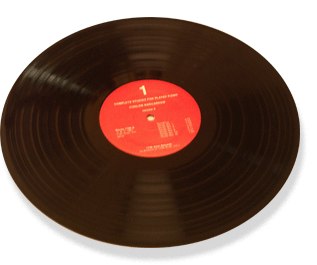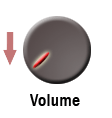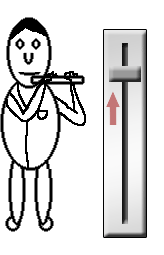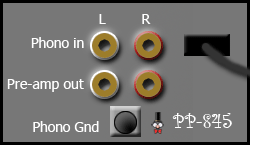
|
|||||||||||||
Putting The Bass And Treble Back To NormalObviously, most of us don't want to listen to records with highly attenuated bass and over-hyped treble, and our records don't sound like they're missing bass or have too much treble, so if all this monkey business is done with these frequencies during recording, how do we get good sounding records in our homes? The answer is that what is attenuated during recording is boosted during playback, and what is boosted during recording is attenuated during playback. In other words, the equalization that is applied during recording is undone by applying the exact opposite equalization during playback, resulting in recorded music that sounds as if no equalization had been applied at all! The RIAA Equalization CurveThese record/reproduce equalization curves were standardized by the Recording Industry Association of America (RIAA) back in 1953. Virtually all records pressed since then follow this standard, and all modern phonograph playback devices are designed with this curve in mind. The Phono Pre-AmpFor whatever reasons, though, the playback curve that undoes the recording curve is not something that most phonograph players can apply on their own. The signal coming out of most record players still has the recording curve applied to it. This makes the signal unsuitable for recording directly to CD-R. Instead, we need to pass that signal through another device, called a phono pre-amp which applies the reproduce curve that undoes the record curve. Where is the phono pre-amp? Well, it can be in any of three places. Phono Pre-amp Location Possibility No. 1: Built In To Your Phonograph PlayerSometimes, it is actually built into a phonograph player. This tends to be rare, unless the phonograph player is a very inexpensive, mass-market/consumer-oriented player. If your phonograph has a phono pre-amp built-in, then you can usually throw a switch somewhere on the player to activate the pre-amp, at which point you actually can take the signal straight out of your phonograph into your computer's sound card.
Here's a view of the back panel of one of these somewhat rare turntables. Notice that it has a set of switches that allows its owner to select whether or not to engage the built-in phono pre-amp. Here, the red LED indicates that this turntable has its phono pre-amp turned on. In this mode, the built in phono pre-amp applies the RIAA playback EQ curve to the audio signal before it leaves the turntable (via the cables, shown here in the middle: one for the left channel and one for the right. The third cable is for the phonograph's electrical ground wire). Phono Pre-amp Location Possibility No. 2: Use a Stand-Alone Phono Pre-Amp
Phono Pre-amp Location Possibility No. 3: Built In To Your Stereo (or A/V) ReceiverThe most common way of getting the signal from your phonograph to a phono-preamp, though, is to use a phono pre-amp that is built into a stereo or A/V receiver.
Here's a view of the back panel of a typical stereo receiver. Over on the left you can see the jacks labeled "Phono". Not all receivers these days have phono input jacks. But in order to use your stereo receiver as a source for phono pre-amplification, your receiver must have these jacks. If your receiver doesn't have phono input jacks, you'll have to either get a new one that does; get a phonograph player with a built-in phono pre-amp; or get a stand-alone phono pre-amp. The easiest setup, though, is if you have a stereo receiver with phono input jacks. From here on out, we're going to assume that you do. |
|
|
|||||||||||
|
|||||||||||||
 Have you ever wondered how the music on your vinyl records got there in
the first place?
Have you ever wondered how the music on your vinyl records got there in
the first place?  First,
it turns out that bass (that is, low frequency) sounds make the grooves on
a record wider. The wider the groove,
the
less recording time will fit on a side. In fact, if nothing were done
about these low sounds, we'd only be able to fit about five minutes on each
side
of the record!
First,
it turns out that bass (that is, low frequency) sounds make the grooves on
a record wider. The wider the groove,
the
less recording time will fit on a side. In fact, if nothing were done
about these low sounds, we'd only be able to fit about five minutes on each
side
of the record! The Problem With Volume
The Problem With Volume The Problem With Treble
The Problem With Treble
 Since
most phonographs don't have built-in phono pre-amps, some manufacturers sell
separate phono pre-amp devices. If you have one of these, you know that
you need to hook your phonograph to the "Phono in" jacks on the phono
pre-amp. Then you can take the signal from the phono pre-amp's output jacks
to your computer's sound
card.
Since
most phonographs don't have built-in phono pre-amps, some manufacturers sell
separate phono pre-amp devices. If you have one of these, you know that
you need to hook your phonograph to the "Phono in" jacks on the phono
pre-amp. Then you can take the signal from the phono pre-amp's output jacks
to your computer's sound
card. 